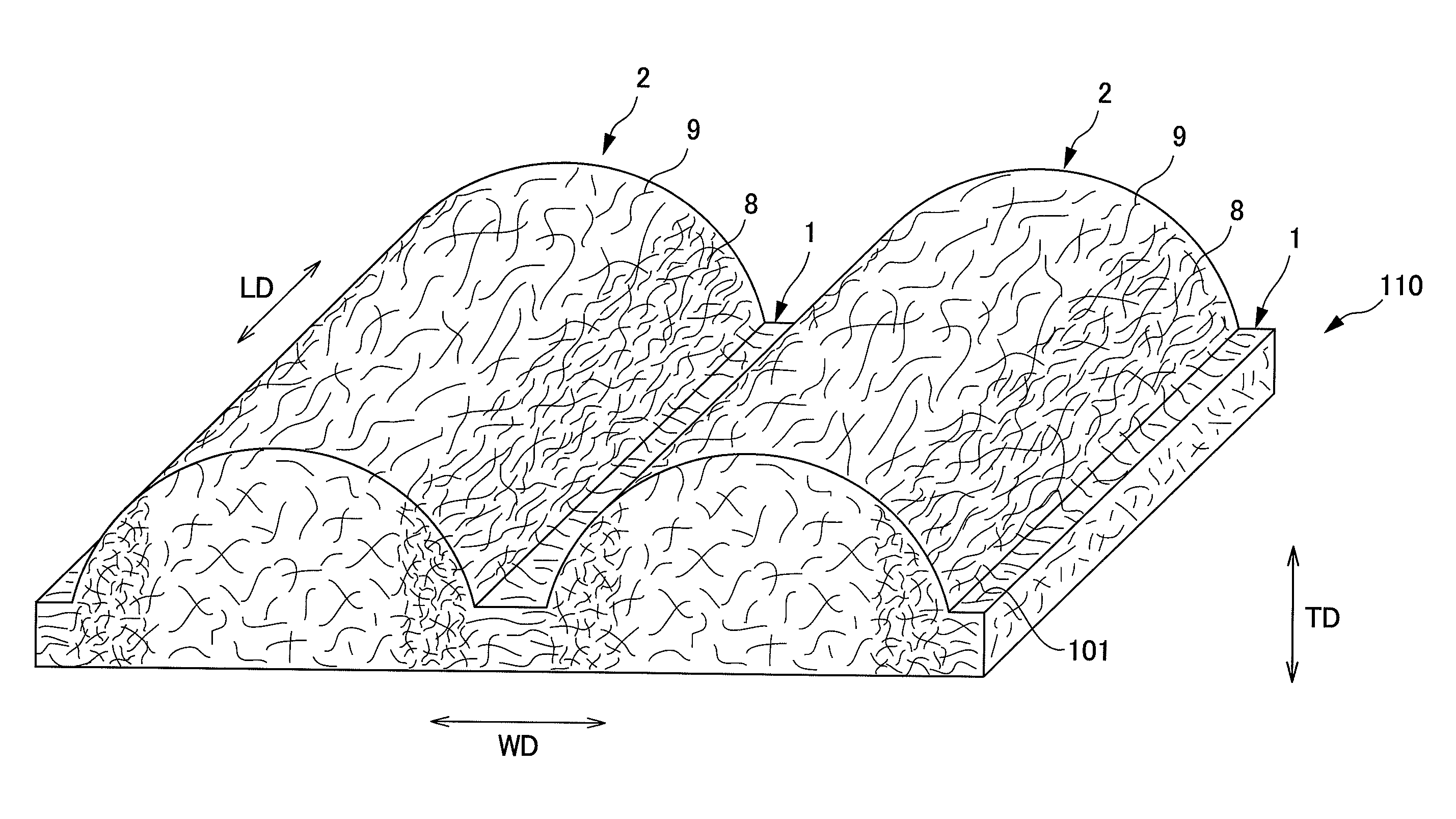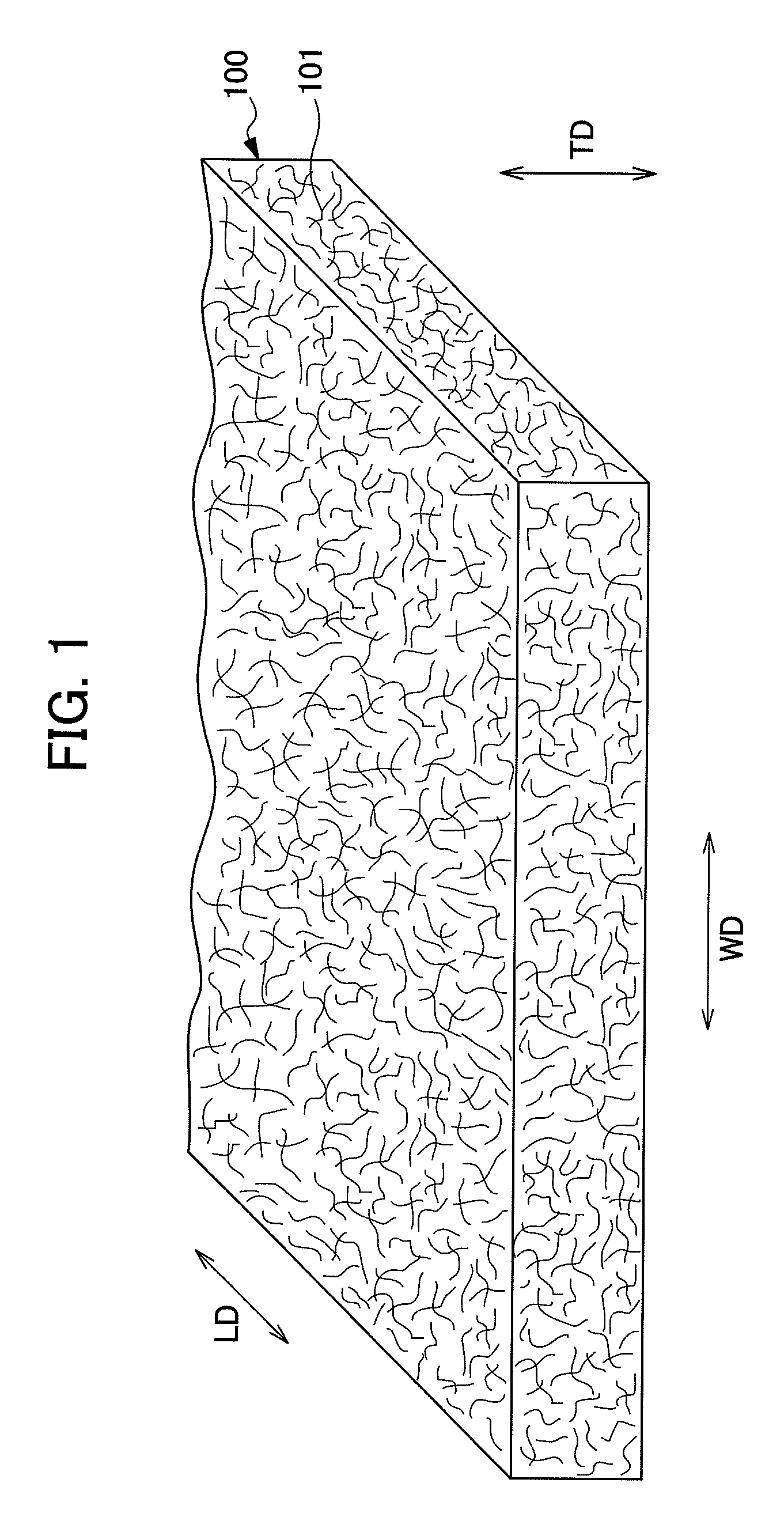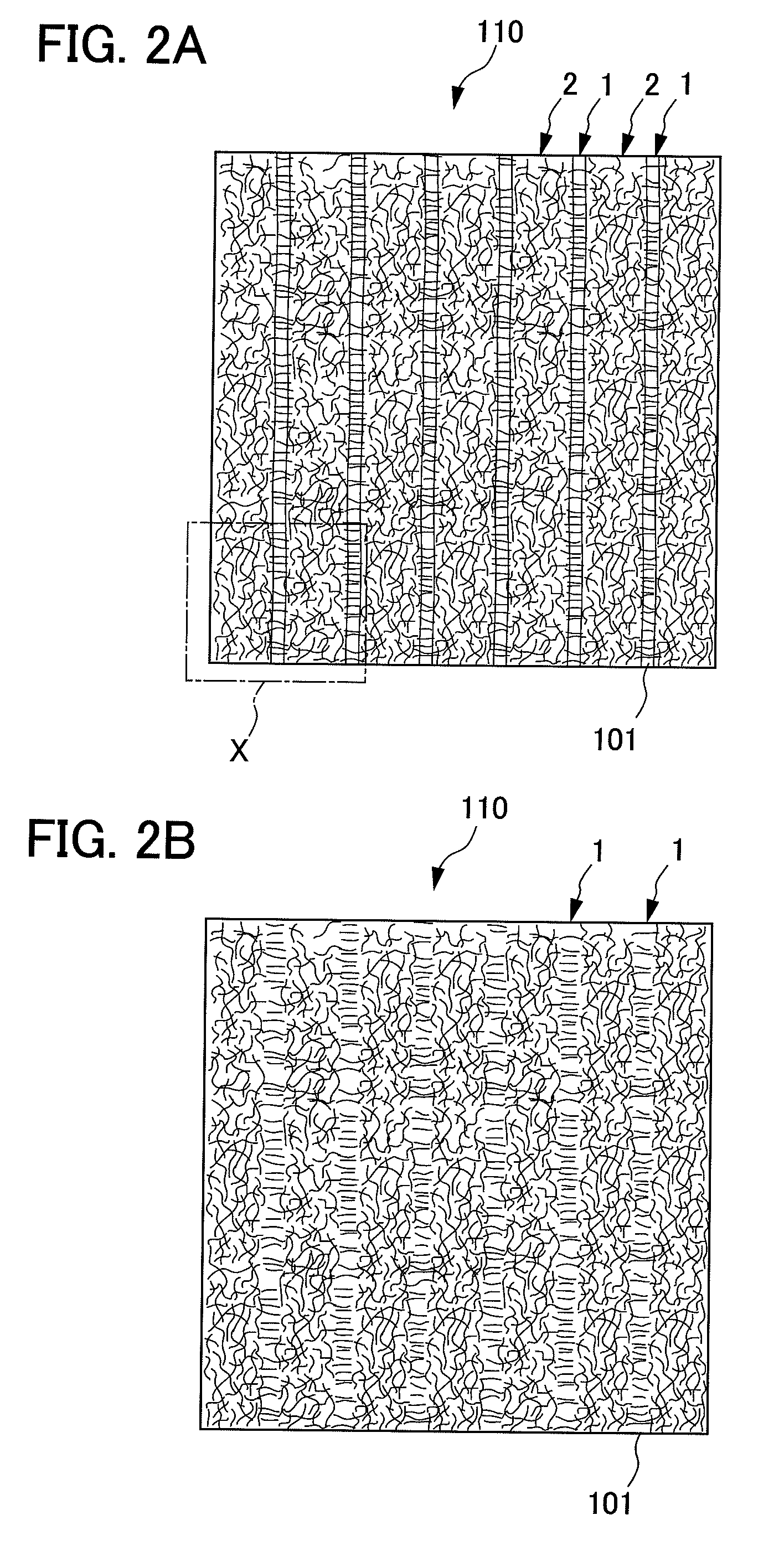Nonwoven fabric
a nonwoven fabric and fiber technology, applied in the field of nonwoven fabrics, can solve the problems of difficult permeation of a predetermined liquid of an excrement through an absorbent layer, affecting and only manufacturing a simple sheet-like nonwoven fabric. achieve the effect of facilitating the permeation of liquid
- Summary
- Abstract
- Description
- Claims
- Application Information
AI Technical Summary
Benefits of technology
Problems solved by technology
Method used
Image
Examples
first embodiment
1. FIRST EMBODIMENT
[0053]Referring to FIGS. 1 to 5, the nonwoven fabric of first embodiment of the present invention will be described.
[0054]The nonwoven fabric 110 of the present embodiment can be manufactured by blowing a fluid, mainly consisting of gas, to a fiber web 100 which is a fiber assembly. The nonwoven fabric includes groove portions 1 which are a plurality of low basis weight portions formed in a longitudinal direction (LD) as a first direction, and convex portions 2 which are a plurality of high basis weight portions formed along the groove portions 1. A fiber basis weight of the groove portion 1 is adjusted to be less than that of the convex portion 2.
1-1. Shape
[0055]As shown in FIGS. 2A and 2B and 3, the nonwoven fabric 110 of the present embodiment is a nonwoven fabric in which the plurality of groove portions 1 are formed in parallel at substantially equal spaces on one surface side of the nonwoven fabric 110. The plurality of convex portions 2 are formed among eac...
fifth embodiment
2-4 FIFTH EMBODIMENT
[0138]Referring to FIG. 14, nonwoven fabric of the present embodiment will be described.
[0139]As shown in FIG. 14, nonwoven fabric 150 of the present embodiment is different from that of the first embodiment in that a second convex portion 22 having a different height from that of the convex portion 2 formed on a first surface side of the nonwoven fabric 150. Differences from the first embodiment will be mainly described below.
2-4-1 Nonwoven Fabric
[0140]The nonwoven fabric 150 includes a plurality of groove portions 1 formed in parallel on it's a first surface side. A plurality of convex portions 2 and a plurality of second convex portions 22 are alternately formed among each pair of the groove portion of the plurality of formed groove portions 1 respectively. The convex portions 2 and the second convex portions 22 are formed in parallel as in the case of the groove portions 1.
[0141]The convex portion 2 and the second convex portion 22 are areas in which no fluid...
sixth embodiment
2-5. SIXTH EMBODIMENT
[0148]Referring to FIGS. 15 and 16, nonwoven fabric of the sixth embodiment of the present invention will be described.
[0149]As shown in FIGS. 15 and 16, the sixth embodiment is different from the first embodiment in that a recessed portion 3A and a projected portion 4A are formed in a groove portion 1 formed on a first surface side of nonwoven fabric 170. Differences will be mainly described below.
2.5.1 Nonwoven Fabric
[0150]As shown in FIG. 15, the nonwoven fabric 170 of the present embodiment is nonwoven fabric in which a plurality of groove portions 1 are formed in parallel at substantially equal spaces on a first surface side of the nonwoven fabric 170. A plurality of convex portions 2 are formed among each pair of the plurality of groove portions 1 respectively. In the groove portion 1, a plurality of recessed portions 3A, which are sparse areas with fiber densities that are less than that of the groove portion 1 are formed at substantially equal spaces. Am...
PUM
| Property | Measurement | Unit |
|---|---|---|
| density | aaaaa | aaaaa |
| density | aaaaa | aaaaa |
| density | aaaaa | aaaaa |
Abstract
Description
Claims
Application Information
 Login to View More
Login to View More - R&D
- Intellectual Property
- Life Sciences
- Materials
- Tech Scout
- Unparalleled Data Quality
- Higher Quality Content
- 60% Fewer Hallucinations
Browse by: Latest US Patents, China's latest patents, Technical Efficacy Thesaurus, Application Domain, Technology Topic, Popular Technical Reports.
© 2025 PatSnap. All rights reserved.Legal|Privacy policy|Modern Slavery Act Transparency Statement|Sitemap|About US| Contact US: help@patsnap.com



